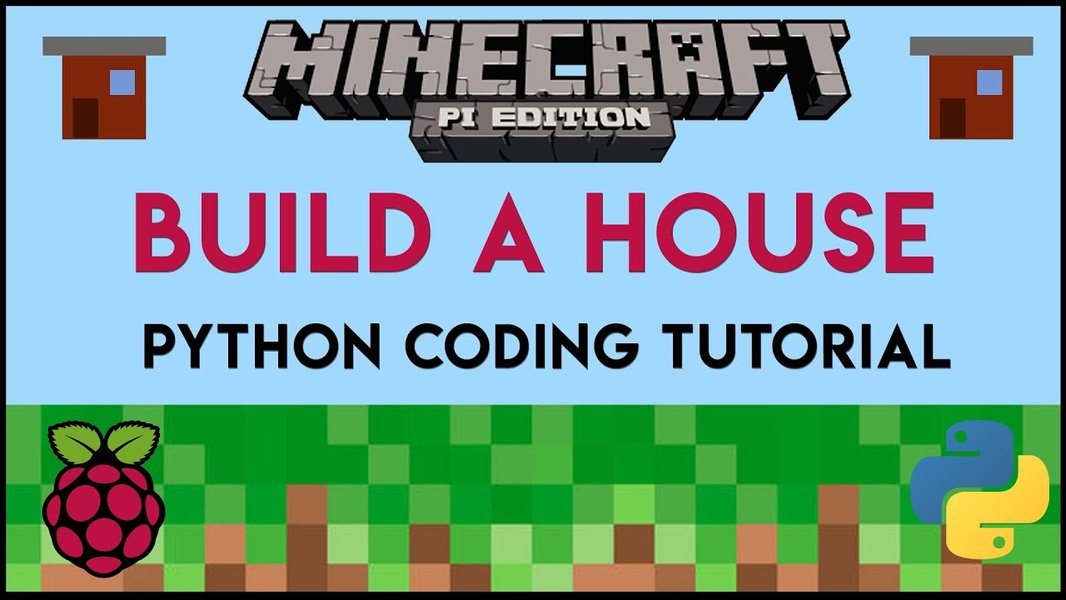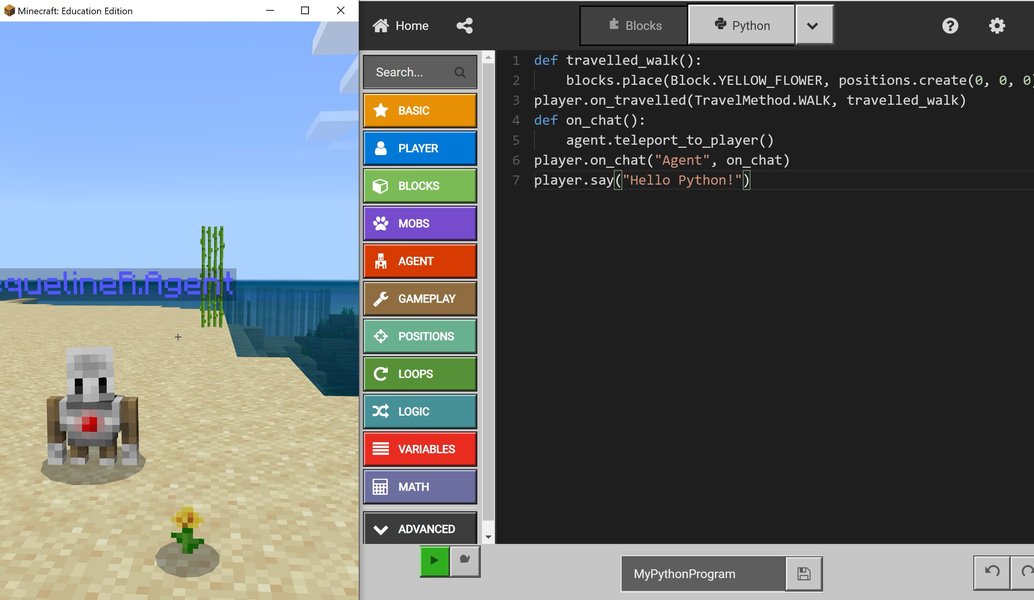
Unlocking Minecraft's Potential with Python: A Comprehensive Guide
Explore the possibilities of using Python to enhance your Minecraft experience, from coding mods to automating tasks.
Key Highlights
- Python integration allows for automating tasks, creating mini-games, and building structures within Minecraft.
- Several libraries and mods, like Raspberry Jam Mod and PythonTool Mod, bridge the gap between Python and Minecraft.
- Minecraft: Education Edition provides structured lessons for learning Python within the game environment.
Minecraft, a game celebrated for its boundless creativity, can be further augmented using the Python programming language. This combination allows players to automate tasks, develop custom mini-games, and even construct elaborate structures with code. While Minecraft is primarily built using Java (Java Edition) and C++ (Bedrock Edition), Python can interact with the game through various mods, APIs, and scripting tools.
Exploring the Synergies Between Python and Minecraft
The integration of Python with Minecraft opens up many possibilities. It's a fantastic method for learning to code, offering instant visual feedback and making the learning process more engaging. Here's a detailed look at how you can use Python to interact with Minecraft:
Leveraging APIs and Mods
Several APIs and mods facilitate the use of Python within Minecraft. These tools act as intermediaries, translating Python commands into actions within the game.
Popular Tools for Python-Minecraft Integration
- Raspberry Jam Mod: This mod emulates the Raspberry Pi Minecraft protocol, allowing Python scripts to run with the desktop version of Minecraft. It supports most of the functionalities provided by the Raspberry Juice plugin.
- PythonTool Mod: This mod provides a visual interface within Minecraft, allowing you to use Python scripts in-game. You can write your own scripts or use examples found online.
- Minescript: A platform for controlling and interacting with Minecraft using Python scripts. It is available as a mod for Fabric, Forge, and NeoForge.
- PyCraft: Allows execution of Python code directly within the Minecraft console. It creates a "mods/scripts" folder where you can store and run your Python scripts.
These tools enable you to interact with Minecraft's objects, entities, and events, opening the door to automating tasks and creating custom content.
Setting Up Your Environment
Before diving into coding, it's essential to set up your development environment. This typically involves installing Python, the necessary mods, and configuring your Minecraft installation.
Step-by-Step Setup
- Install Python: Download and install Python 3.x from the official Python website. Ensure that you add Python to your system's PATH environment variable during installation.
- Install Minecraft Forge: Download and install the appropriate version of Minecraft Forge, which is a modding API for Minecraft.
- Install Mods: Download the desired mods (e.g., Raspberry Jam Mod, PythonTool Mod, or PyCraft) and place them in the "mods" folder of your Minecraft installation.
- Configure the Environment: Start Minecraft with the Forge profile. This will create a new Forge profile in your Minecraft launcher.
Once the environment is set up, you can start writing Python scripts to interact with Minecraft.
Basic Python Commands in Minecraft
Once your environment is set up, you can start using Python to control various aspects of Minecraft. Here are a few basic commands and examples to get you started:
Example Commands
-
Getting Player Position: You can retrieve the player's current coordinates using the
mc.player.getPos()command. -
Setting Blocks: You can place blocks in the world using the
mc.setBlock(x, y, z, block_type)command, wherex,y, andzare the coordinates, andblock_typeis the ID of the block you want to place. -
Sending Chat Messages: You can send messages to the Minecraft chat using the
mc.postToChat("Hello, Minecraft!")command.
Here's an example Python script that retrieves the player's position and places a block of stone at their location:
# Import the Minecraft library
from mcpi.minecraft import Minecraft
# Connect to the Minecraft game
mc = Minecraft.create()
# Get the player's position
pos = mc.player.getPos()
x, y, z = pos.x, pos.y, pos.z
# Set a stone block at the player's position
blockType = 1 # 1 is the block ID for stone
mc.setBlock(x, y, z, blockType)
# Post a message to the chat
mc.postToChat("Stone block placed at your location!")
This script connects to the Minecraft game, retrieves the player's coordinates, places a stone block at that location, and sends a confirmation message to the chat.
Advanced Applications and Examples
Beyond the basics, Python can be used for more complex and creative tasks within Minecraft. This includes generating structures, creating games, and automating repetitive actions.
Structure Generation
Python scripts can be used to generate complex structures, such as houses, castles, or even more abstract designs. By using loops and conditional statements, you can create intricate patterns and designs that would be time-consuming to build manually.

Building a house in Minecraft with Python code.
Creating Mini-Games
Python can also be used to develop mini-games within Minecraft. For example, you could create a treasure hunt game where players need to find hidden blocks, or a parkour course with automated checkpoints and timers.
Automating Tasks
Repetitive tasks, such as mining or building walls, can be automated using Python scripts. This can save time and effort, allowing you to focus on more creative aspects of the game.
Minecraft: Education Edition
Minecraft: Education Edition offers an immersive integration with Python, providing structured lessons and projects for learning the language within the game environment. This version includes the Python 101 course, which teaches the basics of Python, including syntax, data types, variables, and loops.

Python integration within Minecraft: Education Edition.
The Education Edition also features Python Islands, which are learning modules that introduce programming concepts in a game-like setting. These islands cover topics such as variables, data types, and the use of the Minecraft Agent.
Challenges and Considerations
While Python offers many exciting possibilities for enhancing Minecraft, there are also some challenges and limitations to consider.
Compatibility and Updates
Minecraft is continuously updated, and mods may not always be compatible with the latest versions. It's essential to ensure that the mods and APIs you are using are compatible with your version of Minecraft.
Performance
Running Python scripts within Minecraft can sometimes impact performance, especially if the scripts are complex or resource-intensive. Optimizing your code and using efficient algorithms can help mitigate these issues.
Security
When using mods and APIs, it's important to download them from trusted sources to avoid security risks. Malicious mods can potentially compromise your Minecraft installation or your computer.
Available Mods Overview
Here is a table summarizing some of the available mods and tools for using Python with Minecraft:
| Mod/Tool | Description | Key Features |
|---|---|---|
| Raspberry Jam Mod | Emulates the Raspberry Pi Minecraft protocol. | Allows running Python scripts with the desktop version of Minecraft, supports most Raspberry Juice plugin functionalities. |
| PythonTool Mod | Provides a visual interface for using Python scripts in-game. | Enables writing and using Python scripts directly within Minecraft, offers a variety of online examples. |
| Minescript | Platform for controlling Minecraft with Python scripts. | Supports Fabric, Forge, and NeoForge, enabling versatile interaction with the game. |
| PyCraft | Allows executing Python code in the Minecraft console. | Creates a "mods/scripts" folder for storing and running Python scripts, supports custom script loading. |
| PythonConnectMod | Connects to Python (or any other app) through a socket server. | Allows your code to easily interact with your Minecraft client by sending commands through a socket. |
This video tutorial demonstrates how to code a house to appear in a Minecraft world using Python. It's a great starting point for beginners looking to create their first project, showcasing the potential of Python in automating construction within Minecraft. By following the steps in the video, users can learn to manipulate the game environment and build structures with code.
FAQ
Is it possible to create mods for Minecraft using Python?
While Minecraft is primarily developed in Java (Java Edition) and C++ (Bedrock Edition), you can use Python to interact with the game through various mods and APIs. These tools allow you to write Python scripts that control aspects of the game, automate tasks, and create custom content.
What are some popular mods for using Python with Minecraft?
Some popular mods include Raspberry Jam Mod, PythonTool Mod, Minescript, and PyCraft. These mods provide different ways to integrate Python code into Minecraft, from emulating the Raspberry Pi Minecraft protocol to allowing direct execution of Python code within the game console.
How do I set up my environment to code Minecraft with Python?
To set up your environment, you need to install Python, Minecraft Forge (a modding API), and the desired mods. You then place the mods in the "mods" folder of your Minecraft installation and start the game with the Forge profile.
What can I do with Python in Minecraft?
With Python, you can automate tasks, generate structures, create mini-games, and interact with the game's objects and entities. You can also use Python to analyze data and create custom gameplay mechanics.
Is Minecraft: Education Edition a good way to learn Python?
Yes, Minecraft: Education Edition offers an immersive integration with Python, providing structured lessons and projects for learning the language within the game environment. It includes the Python 101 course and Python Islands, which teach the basics of Python in a game-like setting.
References
Last updated April 12, 2025